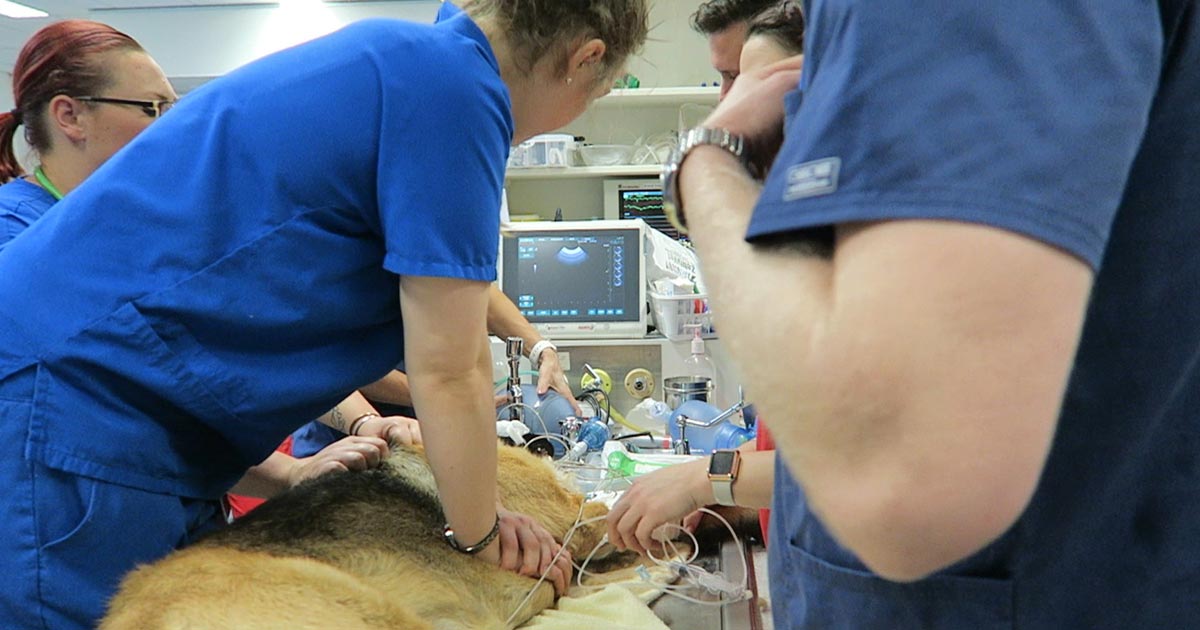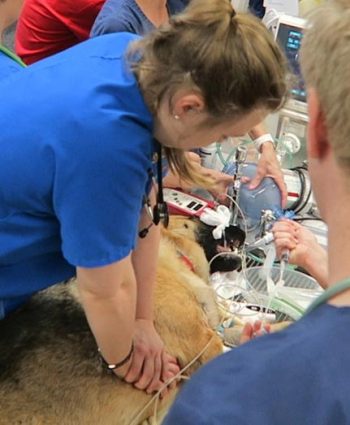
In the cardiopulmonary resuscitation (CPR) guidelines, CPR is divided into basic and advanced life support. Basic life support (BLS) involves the act of chest compressions and ventilation.
Prior to the CPR guidelines – developed by the Reassessment Campaign on Veterinary Resuscitation initiative, based on extensive, systemic veterinary literature reviews – no standardisation existed in CPR protocols. This meant most CPR was reactive, instead of proactive.
Needless to say, this was extremely detrimental to the outcome of resuscitation efforts.
Chest compressions

Chest compressions take precedence over all other procedures. They are the only act that will return tissue perfusion; therefore, the quality of the compressions is of paramount importance.
You will need to achieve between 100 and 120 compressions per minute, with a compression depth of one-third to one-half of the width of the chest. Full elastic recoil of the chest between individual compressions must be allowed, as this is essential for venous return to the heart and coronary perfusion.
Uninterrupted chest compression cycles of two minutes are also required, because it takes about 60 seconds to reach maximum cardiac perfusion pressure (CPP). Any time the compression is halted, this perfusion pressure falls below adequate tissue perfusion threshold and will take another 60 seconds of high-quality chest compressions to achieve maximum CPP again.
Remember, chest compressions are poor substitutes for cardiac output; it can only substitute 25% to 30% of the normal cardiac output at best. Therefore, any time the quality of the chest compression decreases, or if the compression is stopped, tissue is not adequately perfused. To prevent exhaustion and reduced compression quality, the compressors should rotate every two minutes.
Technique
The technique for performing chest compressions is dependent on the body type of the animal, based on the argument of the cardiac or thoracic pump theory.
The “cardiac pump” theory postulates that blood flows because of direct compression of the heart. The “thoracic pump” theory hypothesises that blood flow occurs when the intrathoracic pressure exceeds extrathoracic vascular pressure; therefore, blood is squeezed out of the large vessels (aorta and vena cava). Together with one-way venous valves, this ensures a one-way, venous-to-arterial direction blood flow.
All dogs and cats should have CPR performed in lateral recumbency, with barrel-chested dogs as the exception. Large dogs respond best when compressions are done over the widest part of the chest (thoracic pump theory). Keel-chested dogs’ hearts are easily identified, and compressions should be performed directly over the heart (cardiac pump theory). This is similar to small dogs and cats, where compressions can be done directly over the heart.
In certain small dogs and cats, compressions can also be done circumferentially over the heart. In barrel-chested dogs, compressions should be performed directly over the heart with the dog in dorsal recumbency (cardiac pump).
As mentioned in the previous post, chest compressions should be commenced immediately, especially if cardiopulmonary arrest is suspected. Since every staff member can perform BLS, everyone should be familiar with the protocol and start in the absence of a veterinarian.

Leave a Reply